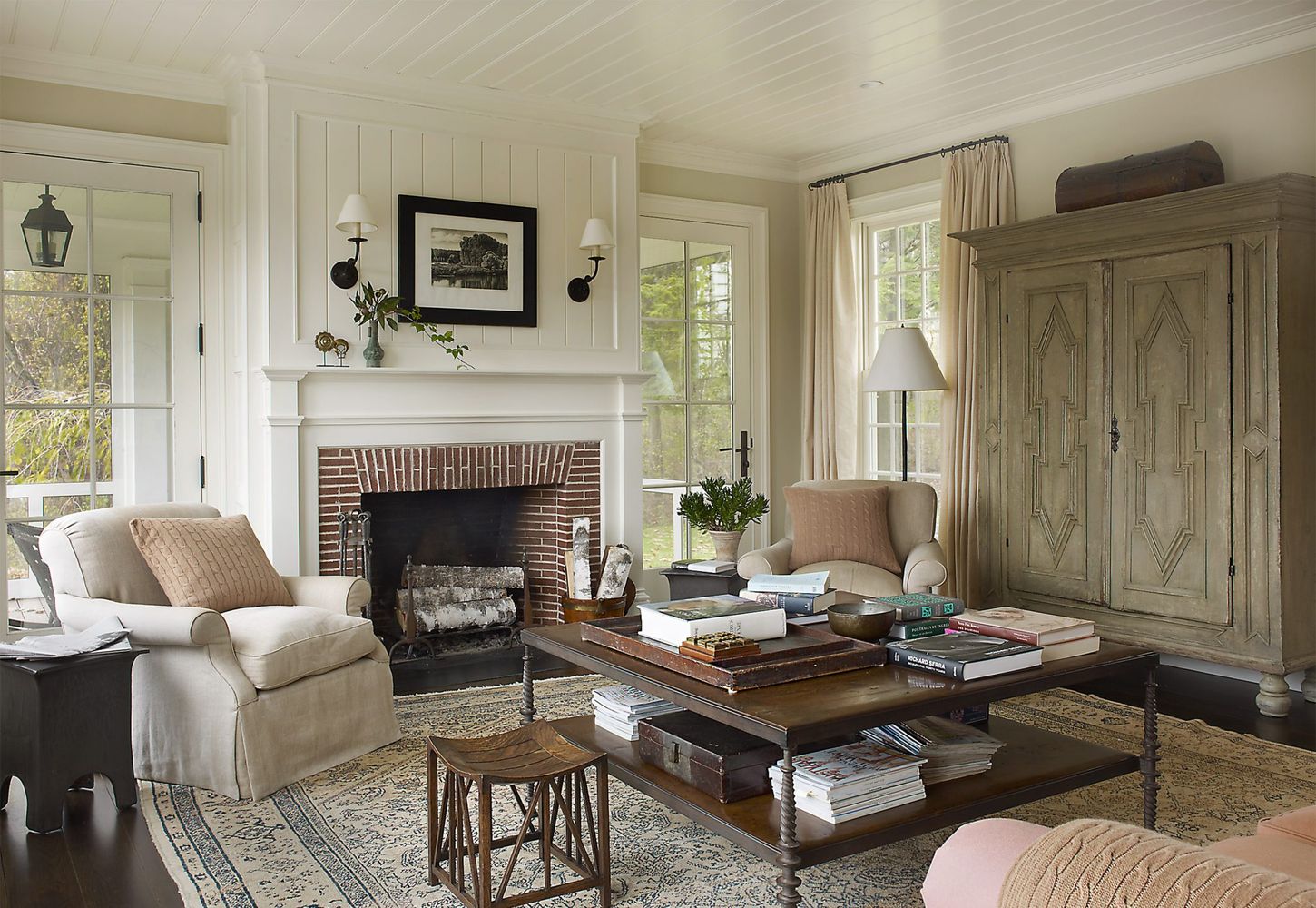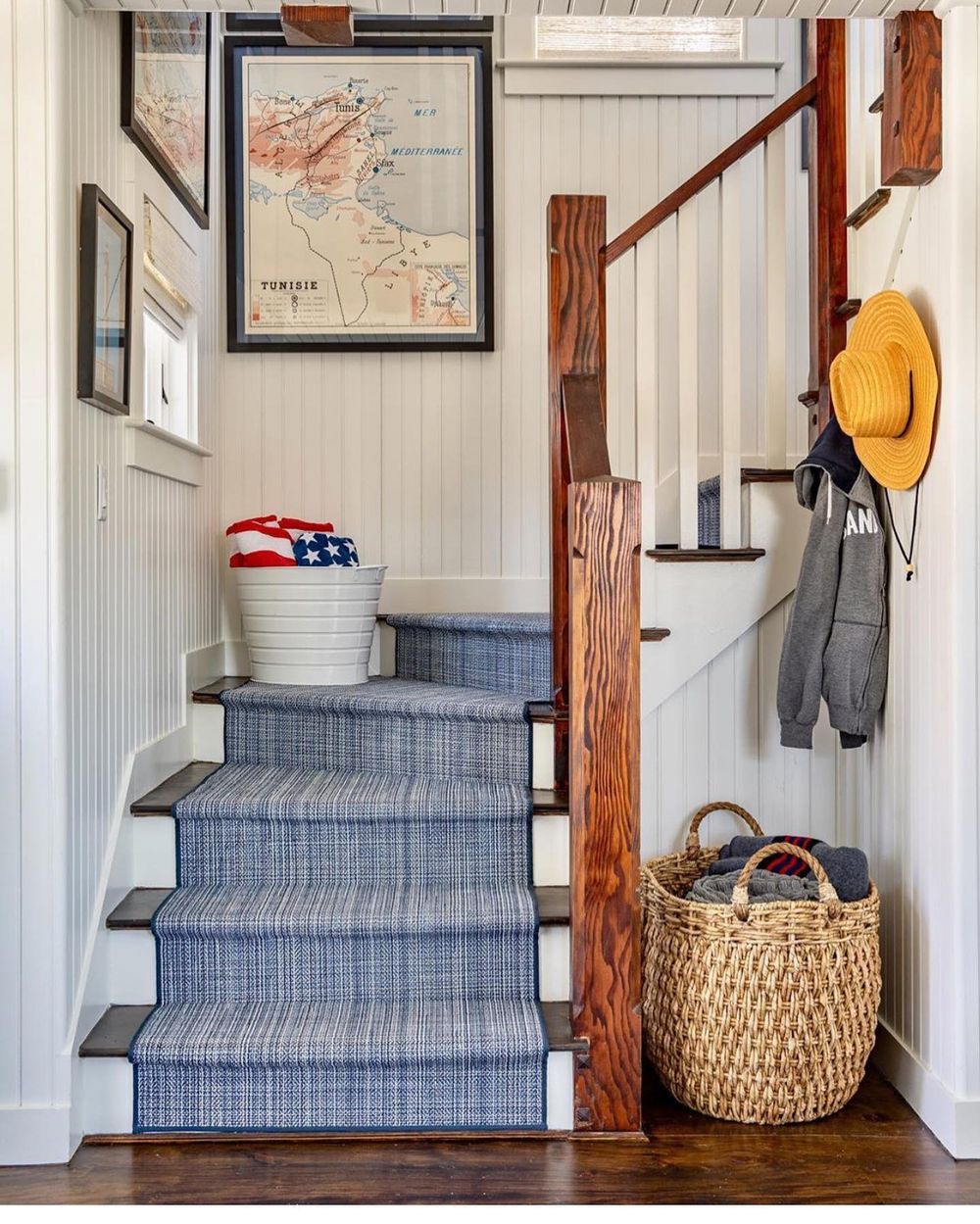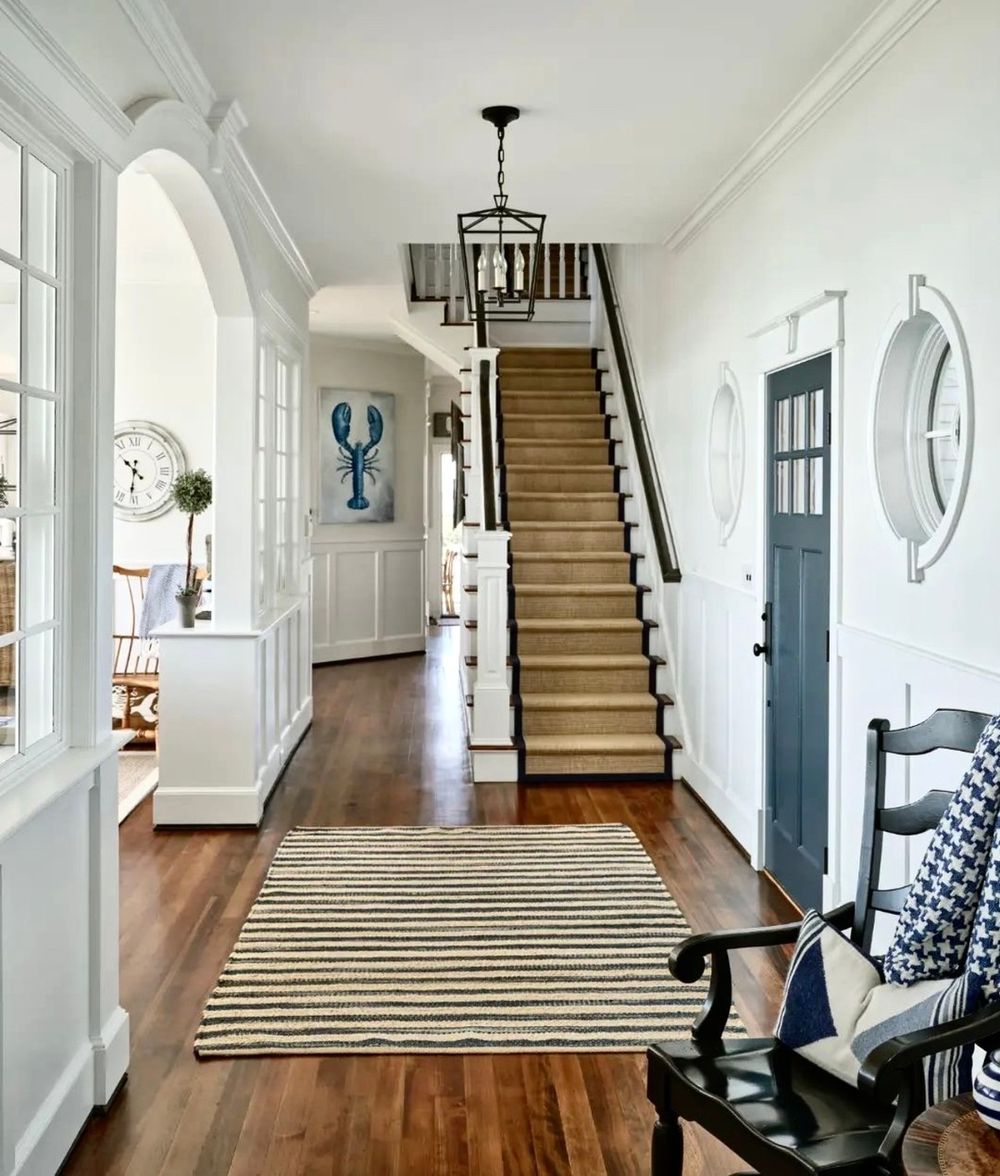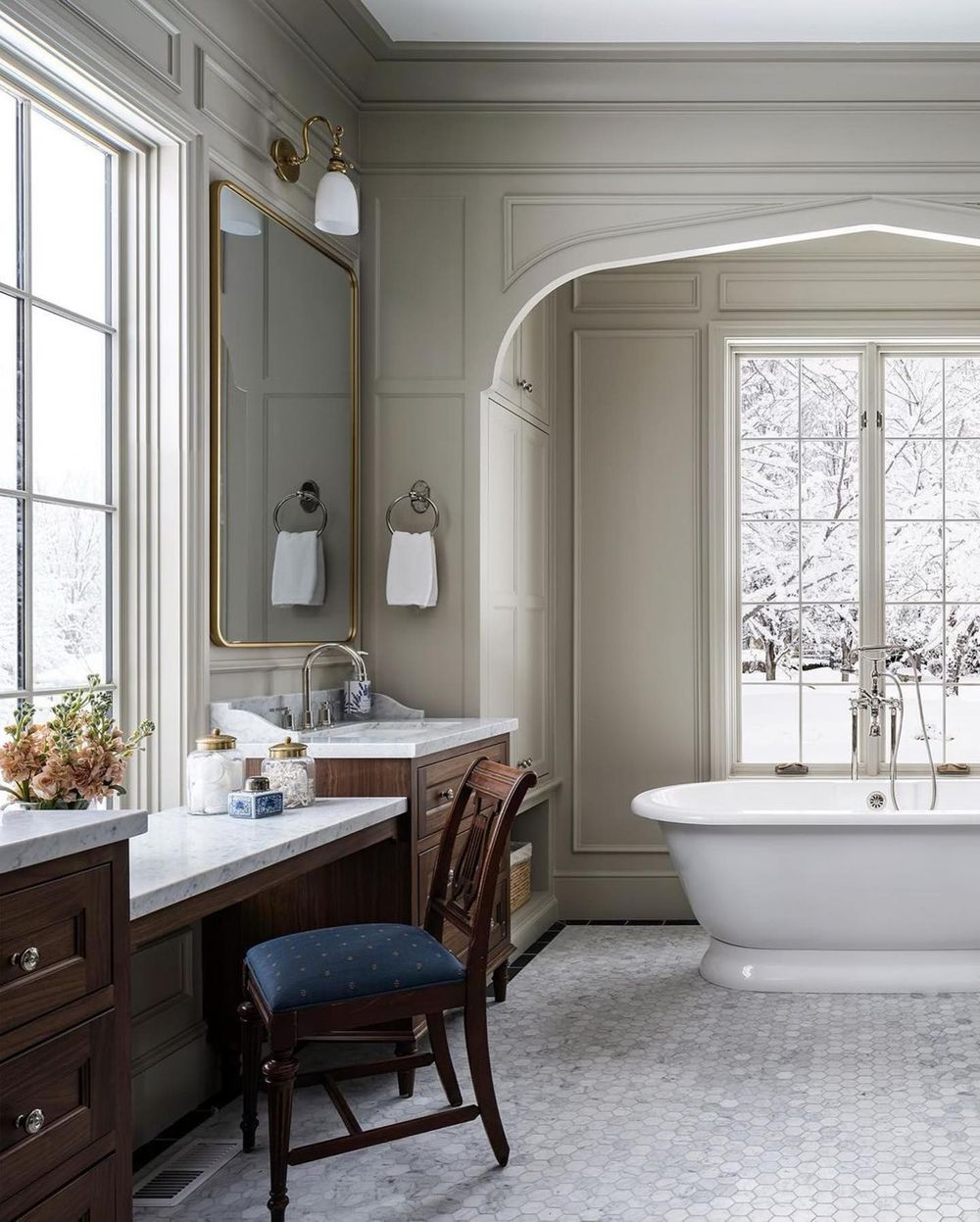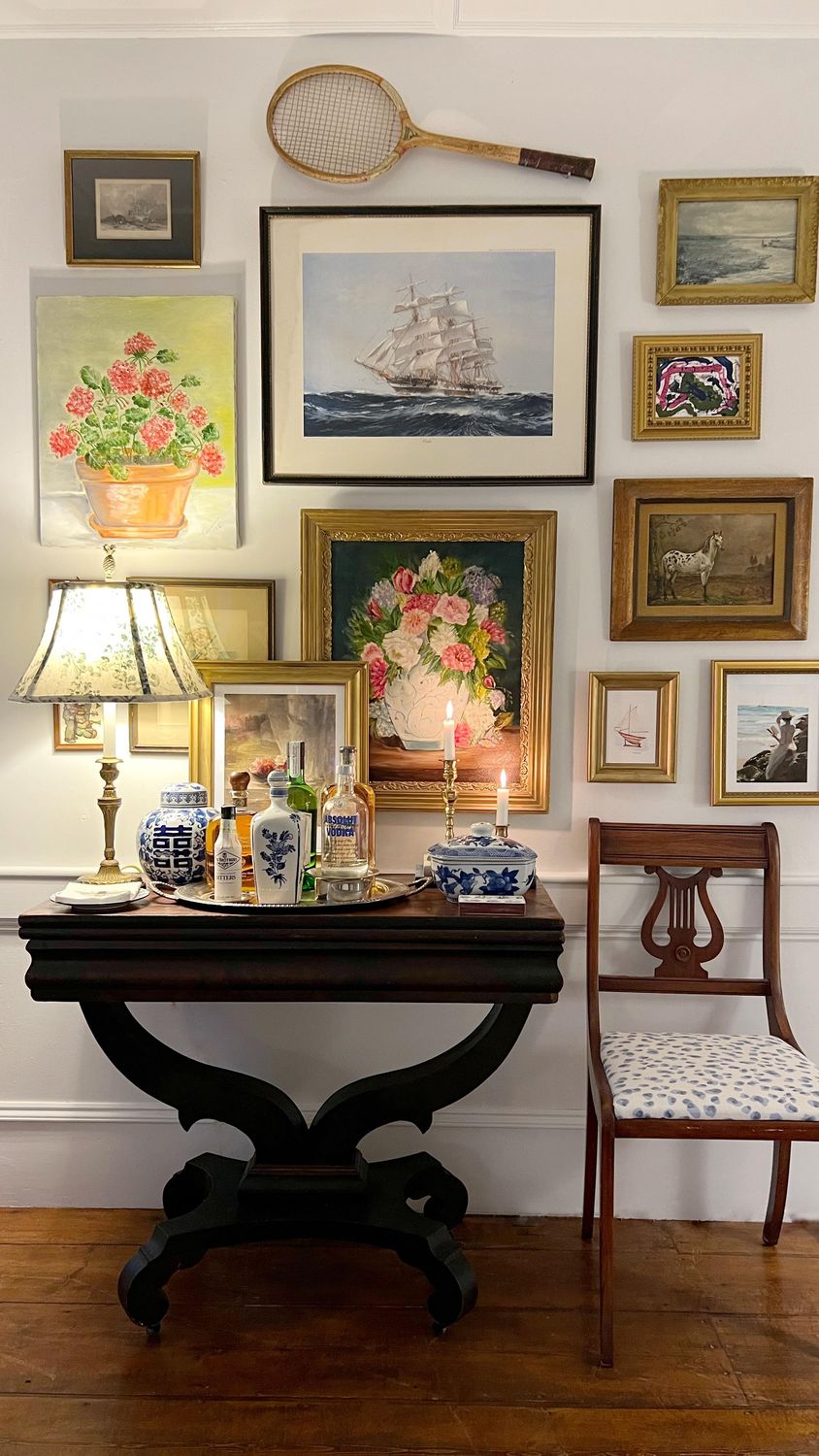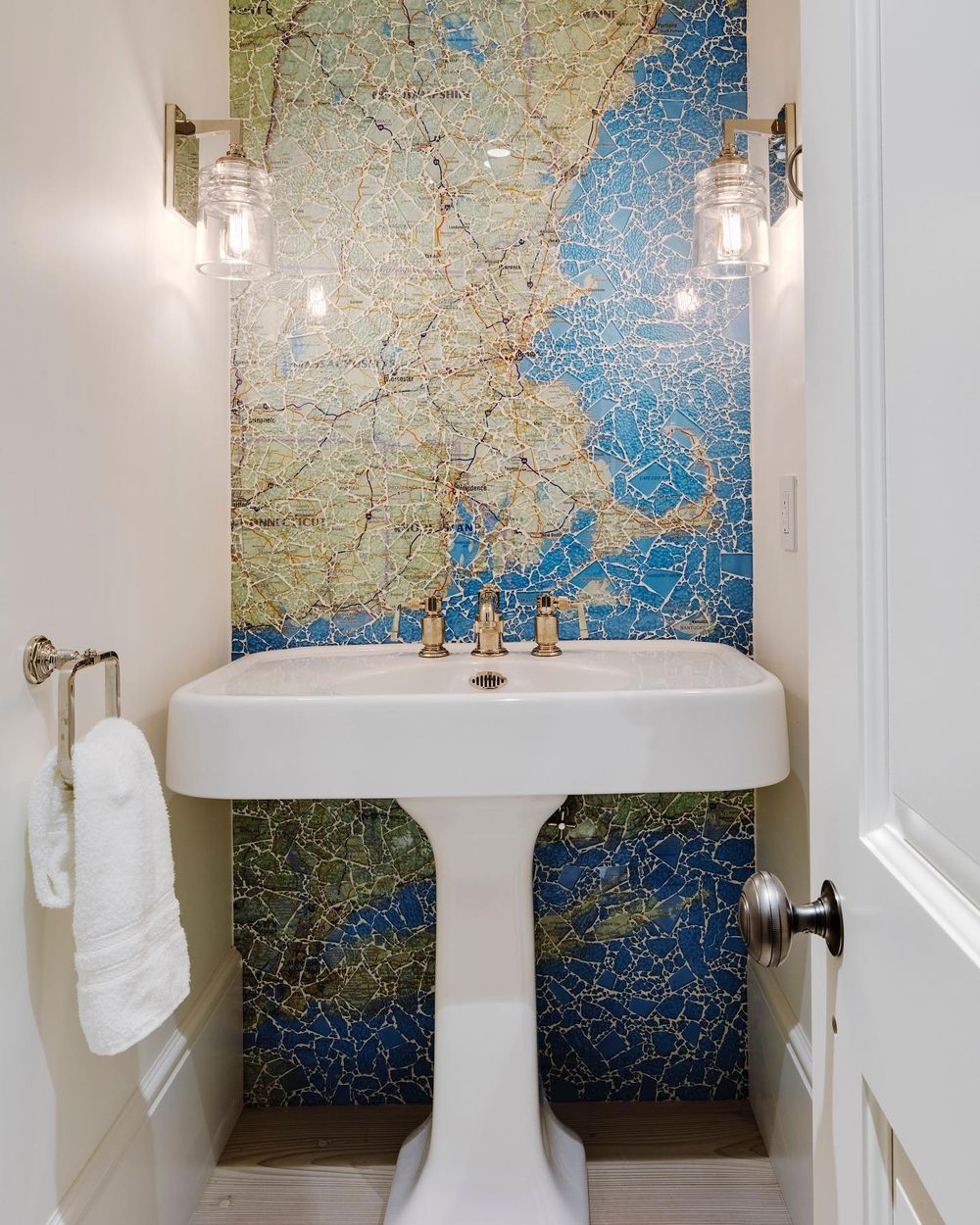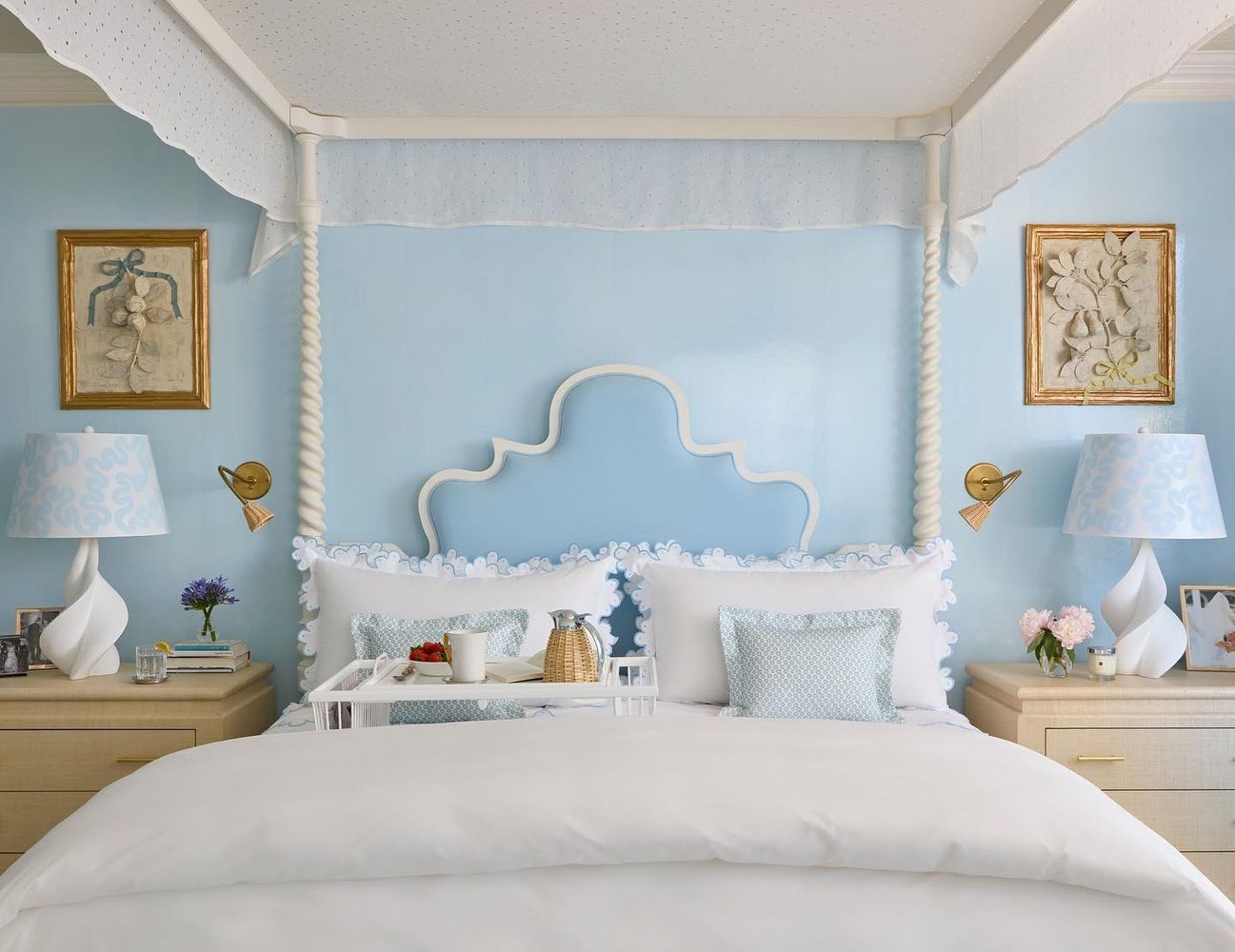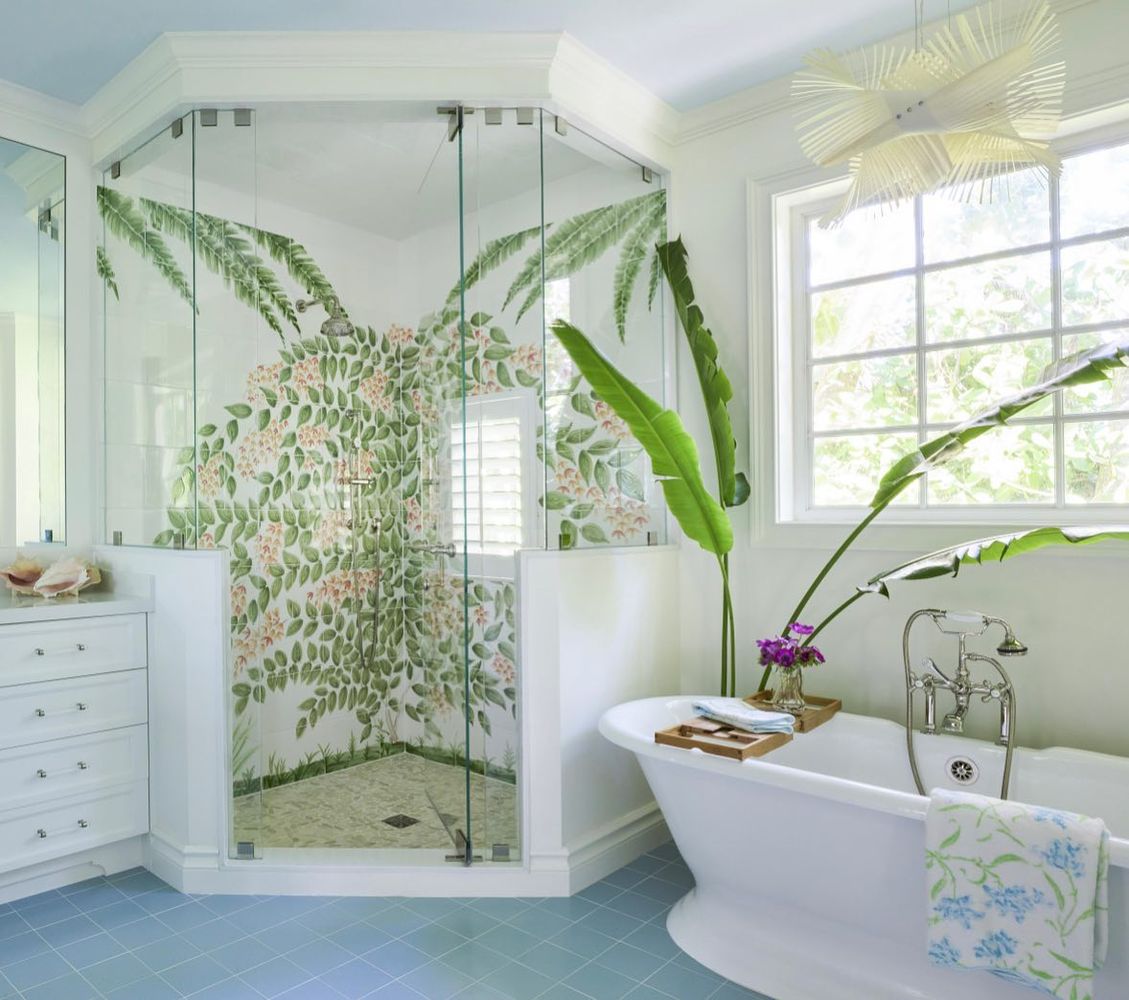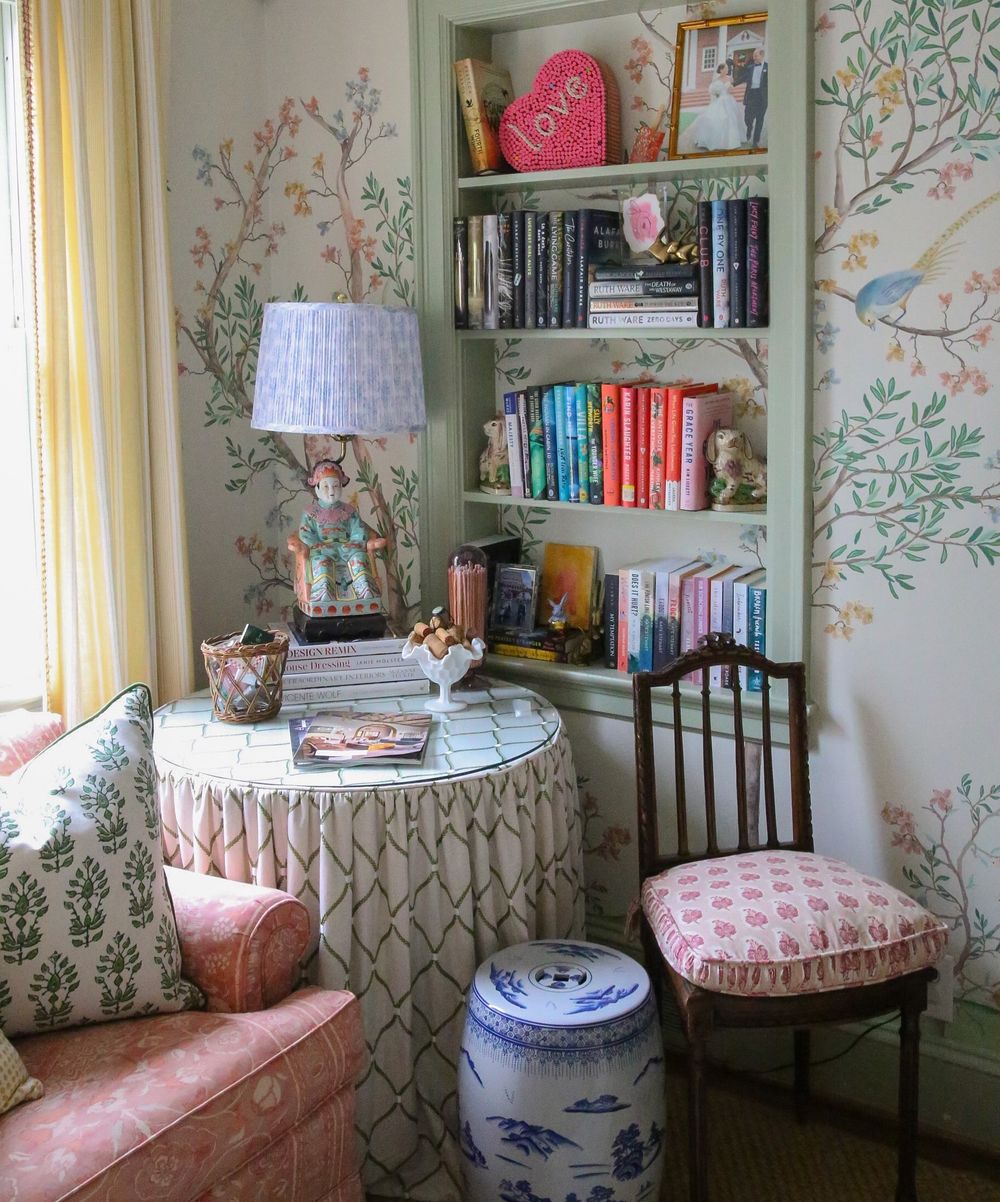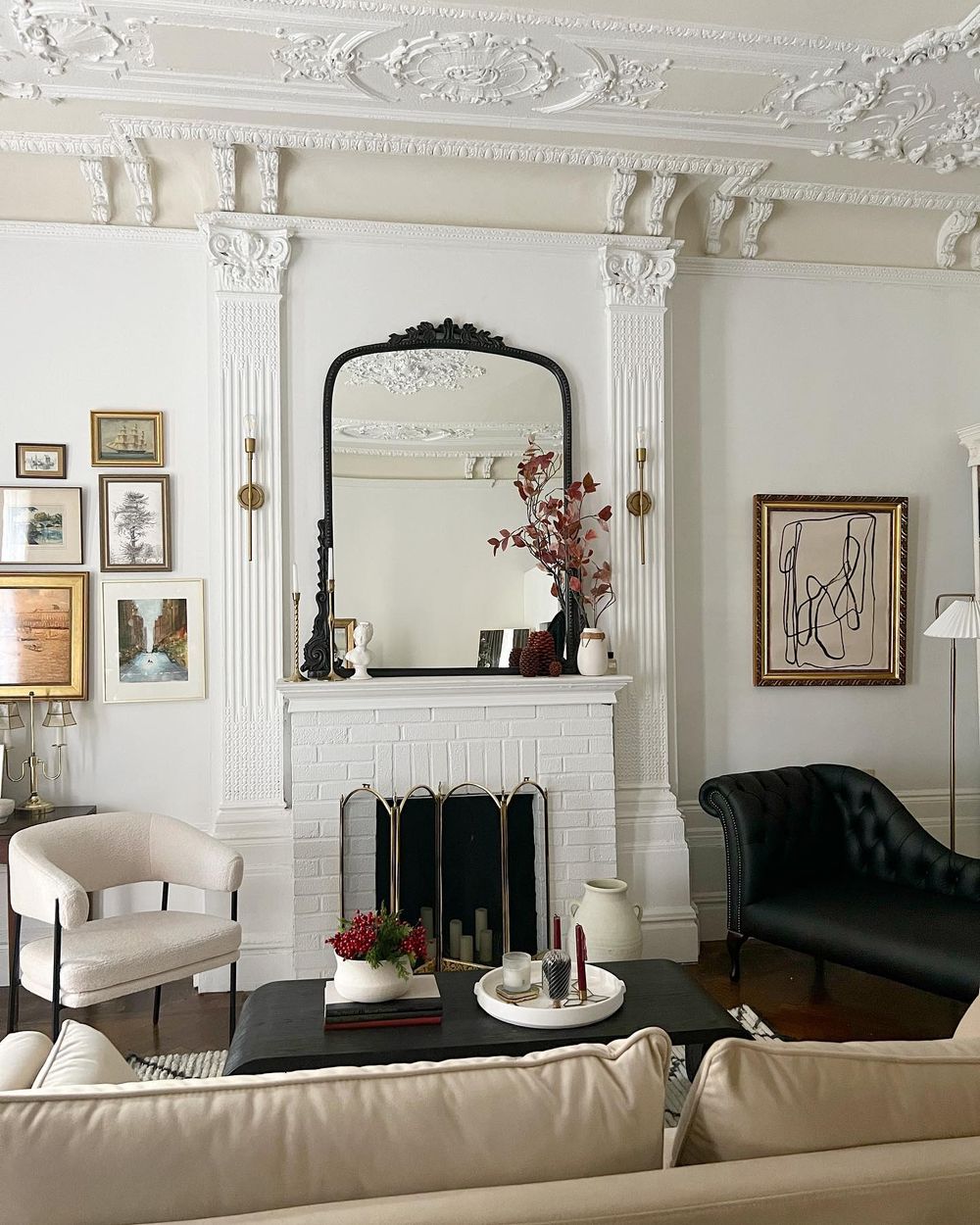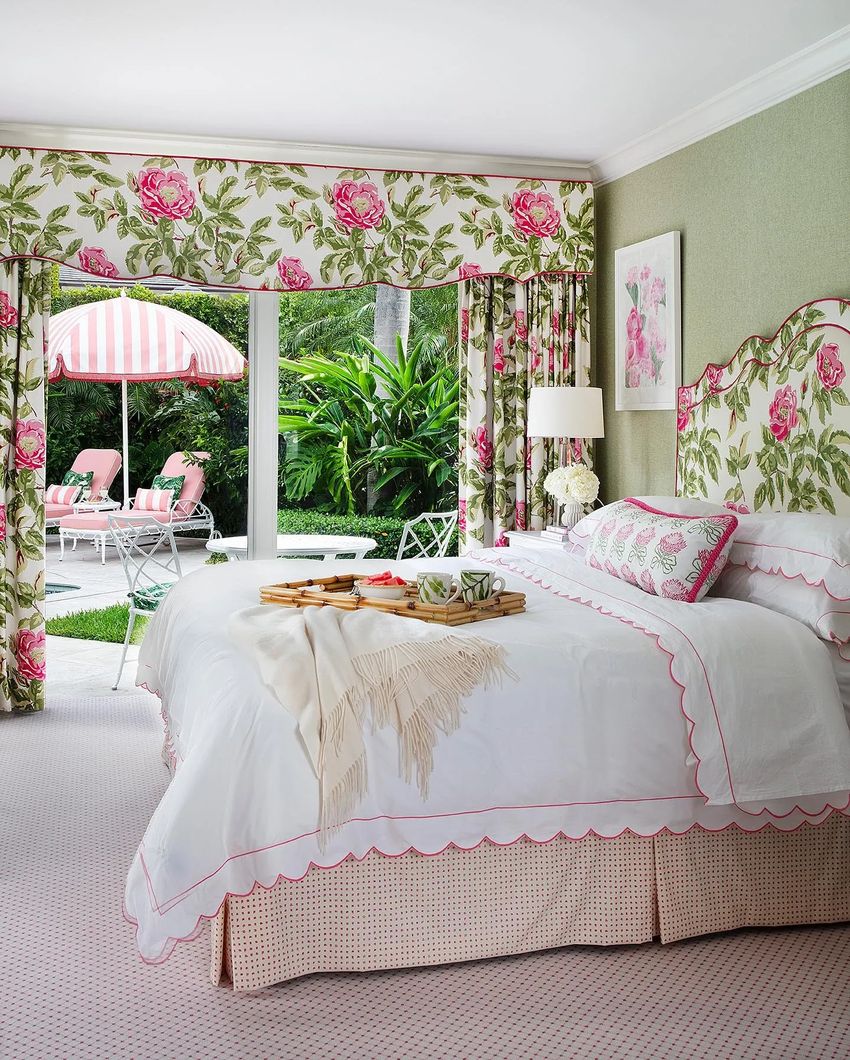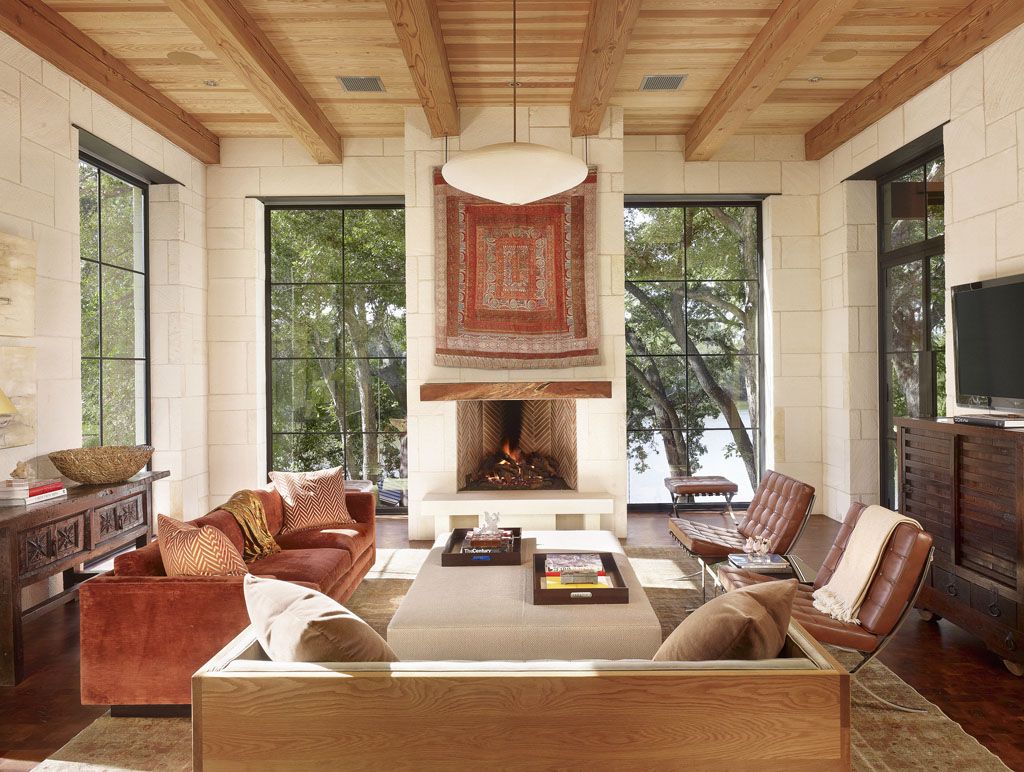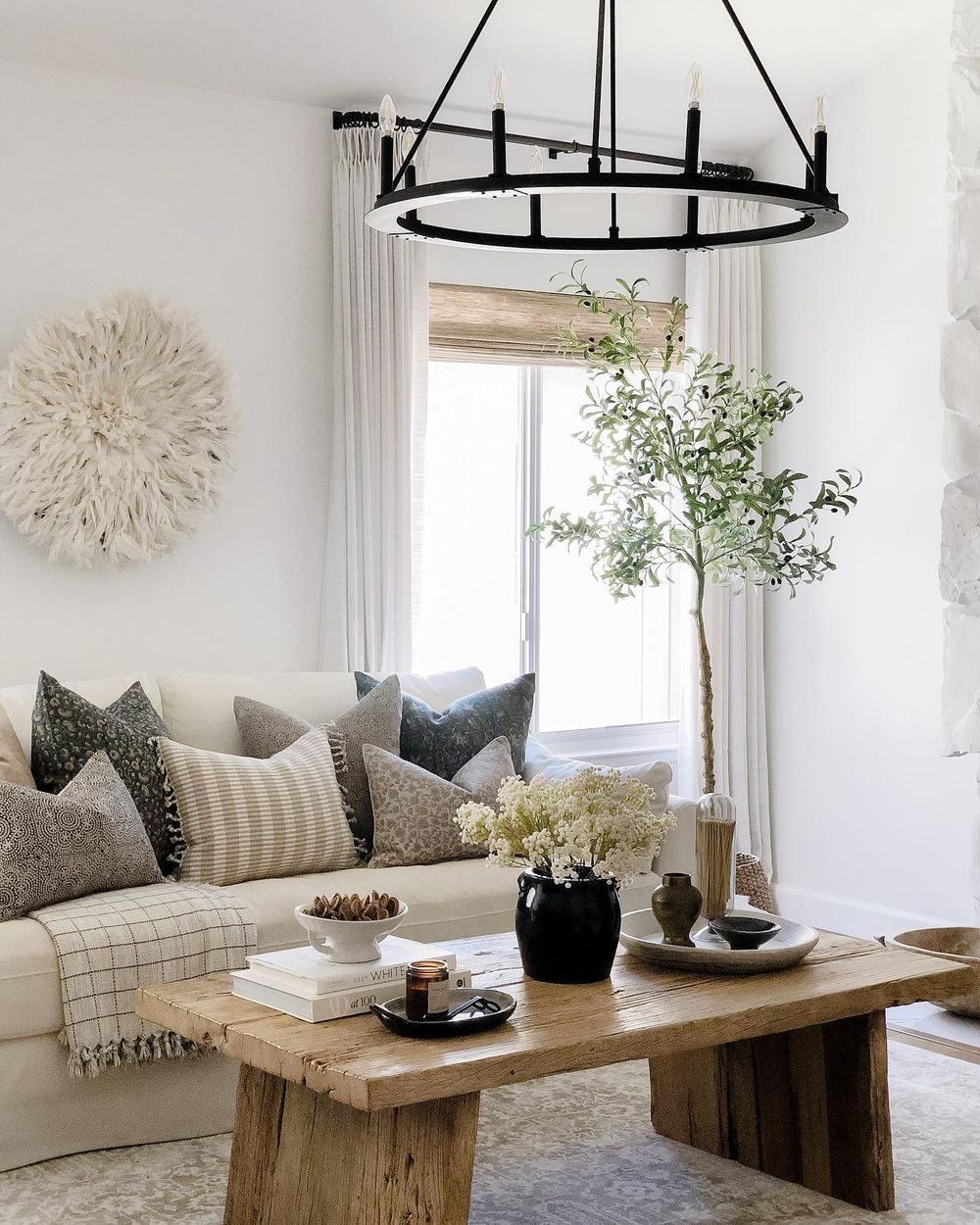Nestled between the tranquil shores of the Atlantic and the picturesque mountains, New England is a region that exudes charm, history, and a unique design aesthetic. Drawing inspiration from colonial roots, coastal influences, and the natural beauty of the landscape, New England interior design invites warmth and sophistication into every room.
Whether you’re looking to update your bedroom with nautical touches or create a rustic-luxe living area, this guide will provide you with essential tips to capture the essence of New England in your home decor.
Historical Influences on New England Interior Design
New England interior design is deeply rooted in a tapestry of historical influences that reflect the region’s colonial past and its evolution over centuries. The early settlers brought with them European styles, particularly from England and the Netherlands, which laid the foundation for what would become the distinct New England aesthetic.
The simplicity and functionality of Colonial design emphasized practicality, featuring straightforward furniture forms, muted colors, and natural materials. This utilitarian approach was informed by the harsh New England climate, leading to the creation of cozy, well-insulated spaces that prioritized comfort.
As time progressed, the Federal style emerged in the late 18th century, marking a shift toward elegance and refinement. Characterized by symmetrical designs and Federalist motifs, this style incorporated lighter color palettes and more decorative furnishings, reflecting America’s burgeoning sense of identity and prosperity.
The influence of the Arts and Crafts movement in the late 19th and early 20th centuries further reshaped New England interiors, emphasizing handcrafted quality, natural materials, and the beauty of functional design, which resonated with the region’s ethos of craftsmanship rooted in its industrial past.
In the 20th century, the Cape Cod style became emblematic of New England’s coastal charm, showcasing shingle-clad houses and open floor plans that embraced the surrounding landscape. Within interiors, there is a strong appreciation for casual, relaxed decor that draws on nautical elements and a palette of blues, whites, and earthy tones.
Retro Metal Sign: Entering Cape Cod, Island Gift, Vineyard Decor, Massachusetts 8 x 12 inch
$8.88 (as of December 17, 2025 20:02 GMT -05:00 - More infoProduct prices and availability are accurate as of the date/time indicated and are subject to change. Any price and availability information displayed on Amazon at the time of purchase will apply to the purchase of this product.)Today, New England interior design continues to celebrate its historical influences while adapting to modern sensibilities. The blending of traditional and contemporary elements creates spaces that are both timeless and relevant, allowing homeowners to honor their heritage while reflecting their personal tastes.
The enduring legacy of New England’s diverse influences is evident in the region’s distinctive interiors, which continue to inspire designers and homeowners alike.
Key Characteristics of New England Style
New England style interior design is characterized by its warm and inviting aesthetic, reflecting the region’s rich history and natural beauty. One of the key characteristics of this style is its emphasis on natural materials and a neutral color palette.
Homes often feature hardwood floors, exposed beams, and stone accents, creating a sense of rustic charm and authenticity. The color schemes are typically inspired by the coastal environment, utilizing shades of soft blues, sandy beiges, and crisp whites, which evoke a feeling of tranquility and harmony with nature.
Another important aspect of New England interior design is the incorporation of traditional elements, such as colonial and maritime influences. Antique furniture, classic patterns like stripes and plaids, and decorative details such as wainscoting and crown molding can often be found in these spaces.
Handcrafted items and artisanal touches, such as woven nautical artifacts and handmade pottery, further emphasize the region’s artisanal heritage. Comfort plays a significant role in New England style, with spaces designed to be cozy and functional. Cozy sofas and armchairs, often adorned with plush textiles and throw pillows, invite relaxation, while layers of lighting create a warm atmosphere.
Large windows are common, allowing natural light to flood the interior and providing breathtaking views of the surrounding landscapes. The integration of nature is also a hallmark of New England style. This is often achieved through large indoor plants, botanical prints, and art that reflects the local scenery.
Outdoor spaces, such as porches and decks, are seamlessly connected to indoor living areas, enhancing the overall flow of the home. This connection to nature not only enhances aesthetic appeal but also promotes a serene and peaceful environment, capturing the essence of life in New England.
New England style interior design celebrates comfort, tradition, and a deep appreciation for the natural world, creating spaces that are both stylish and inviting.
New England Style Decorations
Here are some examples of New England style decorations:
- Wooden furniture – New England style often features rustic, handcrafted wooden furniture like farmhouse tables, Windsor chairs, and wooden chests.
- Shaker-inspired decor – The simple, functional Shaker design aesthetic is common in New England style, including items like Shaker pegs, wooden boxes, and ladder-back chairs.
- Woven baskets and textiles – Woven baskets, rugs, and other textiles are frequently used to add texture and natural elements.
- Antique accents – Vintage or antique items like old lanterns, weathered signs, and distressed wood pieces are incorporated to give a sense of history.
- Neutral color palette – New England style tends to feature a muted, neutral color scheme with shades of white, cream, gray, and blue.
- Natural materials – Wood, stone, and other natural materials are prominent, reflecting the region’s rural, coastal environment.
- Floral and botanical motifs – Florals, leaves, and other botanical patterns are common in fabrics, artwork, and accessories.
- Nautical touches – Nods to the coastal New England setting, like rope, anchors, and seashells, are often included.
The aesthetic aims for a cozy, rustic, and timeless feel that evokes the charm of the New England region.
Color Palettes and Textures
New England interior design is characterized by its harmonious blend of natural elements, rustic charm, and coastal influences, making it a distinctive style that reflects the region’s rich history and diverse landscapes.
Color palettes commonly used in this design aesthetic often draw inspiration from the surrounding environment. Soft, muted tones such as seafoam green, sandy beige, and crisp white evoke the serene coastal atmosphere, while deeper hues like navy blue and forest green pay homage to the lush woods and waters of the region. These colors create a tranquil and inviting space, often accented with pops of warm earth tones that resonate with the traditional New England landscape.
Textures play a vital role in creating the warm and inviting feel that defines New England interiors. Natural materials such as weathered wood, stone, and linen are frequently incorporated to enhance the organic appeal. Exposed beams, reclaimed wooden furniture, and stone fireplaces serve as focal points that reflect the region’s historic architecture.
Fabrics often showcase the comfort of home, with cozy textiles like wool and cotton used in throw blankets, upholstered furniture, and window treatments. Layering these textures not only adds depth but also ensures a welcoming, lived-in atmosphere.
Together, these color palettes and textures come together to create timeless interiors, evoking the rustic charm and natural beauty that New England is known for.
Popular Materials in New England Interiors
New England interiors are characterized by a rich tapestry of materials that reflect the region’s history, natural landscapes, and climate.
One of the most prominent materials is wood, particularly the iconic northeastern hardwoods like oak, maple, and pine. These woods are often used in beams, flooring, and furniture, providing a warmth and timelessness that resonates with the traditional aesthetic of colonial homes.
In addition to wood, stone also plays a significant role in New England design. Local granite and fieldstone are frequently utilized for fireplaces, walls, and foundations, grounding interiors in the rugged beauty of the region’s geography.
The use of textiles is equally important, with linen, wool, and cotton often featured in upholstery, drapery, and throws, adding layers of comfort and coziness that are essential for creating inviting spaces amidst the changing seasons.
Metal elements like wrought iron and brass are also prevalent, often found in light fixtures, railings, and decorative accents, lending an artisanal touch that complements the overall rustic and refined aesthetic.
In more contemporary interpretations of New England design, reclaimed materials such as barn wood and vintage furnishings are embraced, contributing a sense of history and sustainability while adding character to modern spaces.
The color palette in New England interiors often takes cues from the natural surroundings, featuring muted tones of blue, gray, and earthy greens, which harmonize beautifully with the region’s seasonal shifts.
Overall, the materials used in New England interiors not only reflect the practicality needed for a region with harsh winters but also embody the artistic spirit and rich heritage that define this unique part of the country.
Integration of Coastal and Rustic Elements
The integration of coastal and rustic elements in New England interior design creates a harmonious blend that reflects the region’s unique natural beauty and rich heritage. This design approach celebrates the area’s picturesque coastlines and serene landscapes, combining the laid-back charm of beach houses with the warmth of rustic cabins.
To achieve this aesthetic, one can utilize a palette inspired by the ocean and surrounding forests, incorporating soft blues, sandy beiges, and earthy browns. Natural materials play a pivotal role, with textures such as reclaimed wood, wicker, and stone enhancing the rustic feel, while light, airy fabrics like linen or cotton bring a breezy coastal vibe.
Furnishings that evoke a sense of comfort, like overstuffed sofas with nautical stripes or weathered wooden dining tables, create inviting spaces perfect for gathering. Decorative elements can further enhance this theme by featuring coastal motifs, such as seashells, driftwood accents, or marine-inspired artwork, seamlessly merging with rustic touches like vintage lanterns and handmade pottery.
The lighting also plays a critical part in this design formula, with soft, diffused sources creating a warm ambiance reminiscent of sunsets over the shore.
By thoughtfully combining coastal and rustic elements, you can evoke the spirit of New England, where the charm of the sea meets the beauty of the countryside, resulting in timeless interiors that are both serene and welcoming.
Famous New England Architects and Designers
New England has long been a cradle of innovative architecture and interior design, characterized by its unique blend of historical reverence and modern sensibility.
One of the most renowned architects from this region is H.H. Richardson, whose distinctive Romanesque style left an indelible mark on the landscape of New England in the late 19th century. His work, characterized by heavy stone construction and intricate detailing, can still be seen in iconic buildings such as the Trinity Church in Boston.
Another influential figure is Ralph Adams Cram, who was not only an architect but also a proponent of the Gothic Revival style, designing notable structures such as the Cathedral of St. John the Divine in New York and many in the Boston area, enriching the local architecture with his vision.
In more contemporary times, designers like Victoria Hagan have emerged, known for her elegant yet approachable aesthetic that often incorporates clean lines and a sophisticated use of color and texture. Hagan’s approach reflects a modern take on traditional New England design, blending comfort and style in ways that resonate with both historic and modern sensibilities.
Similarly, Gary McBournie, based in New England, is recognized for his fresh interpretations of classic design principles, often employing a color palette that draws inspiration from the coastal landscape and New England’s rich natural surroundings.
Moreover, the Lieberman Group, a design firm that specializes in residential and hospitality interiors, showcases the fusion of traditional craftsmanship with contemporary design trends. Their work often emphasizes sustainable practices and local materials, which resonate deeply with the values embedded in New England culture.
Collectively, these architects and designers contribute to a tapestry of New England interior design, demonstrating a commitment to innovation while honoring the region’s storied past. As they continue to shape interiors that reflect the character and charm of New England, they ensure that this enduring legacy of design remains vibrant and relevant in today’s evolving aesthetic landscape.
Sustainable Design Trends in New England
Sustainable design has increasingly become a focal point in New England’s interior design landscape, reflecting the region’s commitment to environmental stewardship and a deep appreciation for natural beauty.
One prominent trend is reclaimed materials, where designers incorporate salvaged wood, vintage furniture, and repurposed textiles to create unique and character-rich interiors. This reduces waste while adding a sense of history and authenticity to spaces.
There is a growing emphasis on energy-efficient design, with an upsurge in smart home technology that enhances energy conservation through automated lighting, heating, and cooling systems.
Biophilic design, which seeks to connect indoor spaces with nature, is also taking center stage, featuring large windows that allow for natural light and views of the lush New England landscapes while integrating houseplants and natural materials like stone and clay to enhance a sense of well-being.
Cavallini Decorative Paper - USA Map 20"x28" Sheet
$6.99 (as of December 17, 2025 20:02 GMT -05:00 - More infoProduct prices and availability are accurate as of the date/time indicated and are subject to change. Any price and availability information displayed on Amazon at the time of purchase will apply to the purchase of this product.)Moreover, eco-friendly paint options and sustainable fabrics are becoming standard as designers prioritize low-VOC and non-toxic materials that contribute to healthier indoor air quality. Local artisans and craftspeople are being favored in the selection of furnishings and decor, reflecting a dedication to supporting the local economy and reducing carbon footprints associated with transportation.
As climate awareness grows, the demand for sustainable design solutions is reshaping residential and commercial spaces alike, resulting in interiors that are not only aesthetically pleasing but also environmentally responsible.
This shift is fostering a design ethos that values longevity and mindfulness, ensuring New England’s charm and character are preserved for future generations while embracing modern sensibilities.

